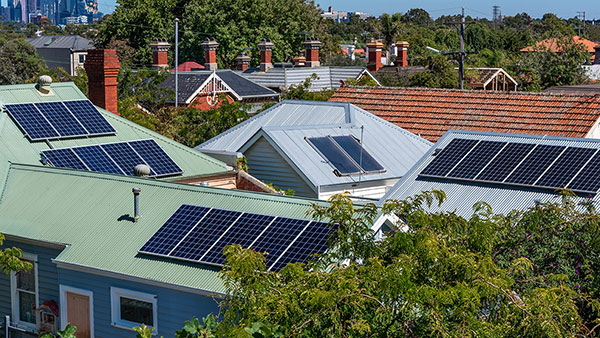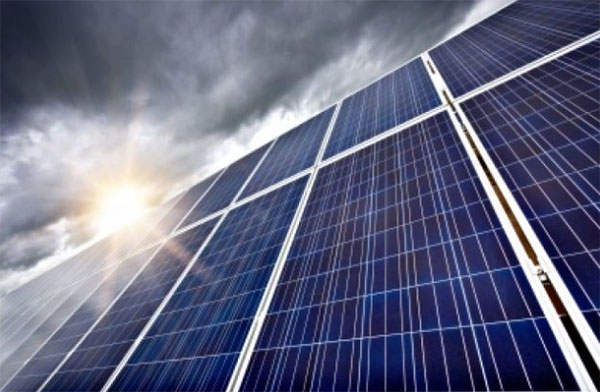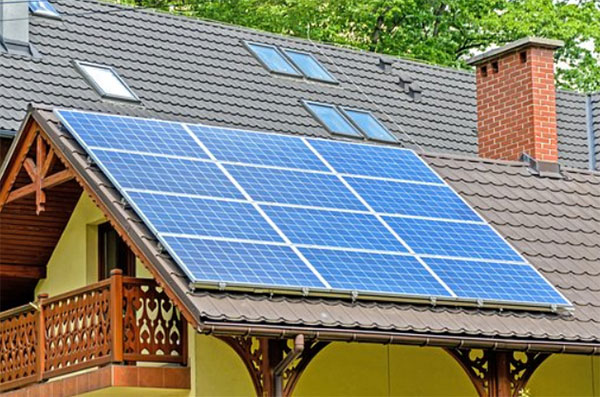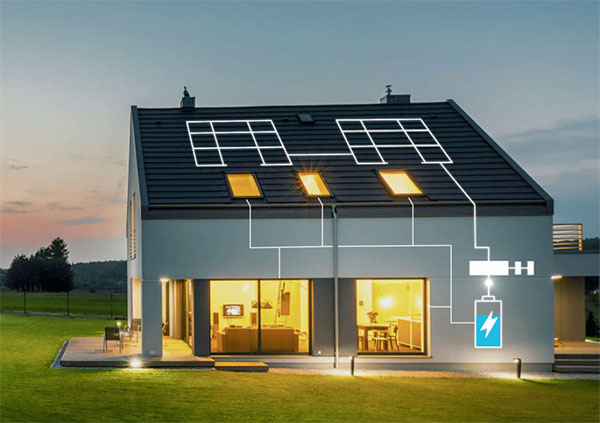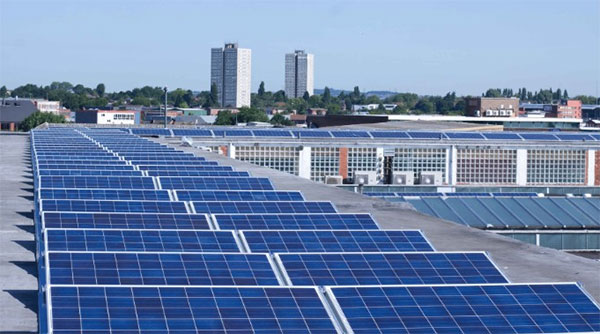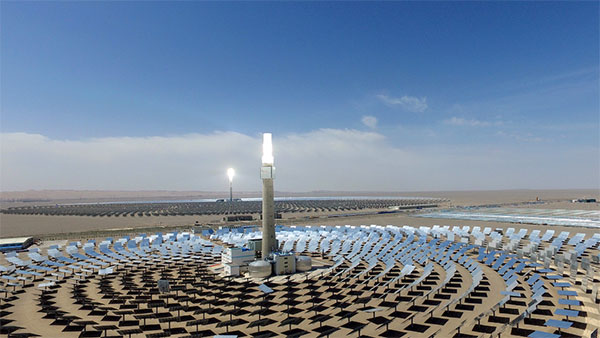Description
Solar panels can power a house all day if they generate enough energy and proper storage is in place.Basics of Solar Panel Technology
The foundation of residential solar energy lies in the solar panels' ability to convert sunlight into usable electricity. This process involves several components and concepts that are crucial to the performance and efficiency of a solar power system.How Solar Panels Generate Electricity
Solar panels, also known as photovoltaic (PV) panels, consist of many solar cells made from semiconductor materials like silicon. When sunlight hits a solar cell, it causes electrons in the silicon to be set free, creating an electrical current. This phenomenon is known as the photovoltaic effect. The current generated by solar panels is direct current (DC), which most home appliances cannot use directly. For instance, a standard solar panel with a power rating of 250 watts can generate electricity to run small appliances. The actual output depends on factors like sunlight intensity and panel efficiency. A home might use panels totaling 5kW to 7kW, enough to cover the average electricity usage of approximately 877 kWh per month in the United States.Types of Solar Panels and Their Efficiencies
There are mainly three types of solar panels used in residential applications:- Monocrystalline Solar Panels: Made from a single, pure crystal of silicon, these panels are typically more efficient and more expensive. They offer efficiencies of around 15-20%.
- Polycrystalline Solar Panels: Composed of multiple silicon crystals, these are less efficient but also less costly, with efficiencies between 13-16%.
- Thin-Film Solar Panels: These are made from a variety of materials and are flexible, lighter, and less efficient (about 10-13%) compared to crystalline-based solar panels.
The Role of Solar Inverters
A solar inverter is a pivotal component in a solar energy system. It converts the DC electricity produced by the solar panels into alternating current (AC), which can power home appliances or be fed into the grid. Inverters also play a key role in optimizing the efficiency and safety of the solar power system. The specifications of an inverter will often match the system's size and configuration. For a typical home solar system, an inverter might range from 3kW to 10kW, ensuring it can handle the electricity load. In terms of cost, residential inverters might range from $1,000 to $3,000, varying with size and features. To ensure long-term performance and safety, a quality inverter with a warranty of around 10-12 years is crucial. This component's efficiency can impact the overall system's performance, so it's essential to choose an inverter that maintains a high conversion efficiency of around 95-98%. In terms of speed, modern inverters work instantaneously to convert power as it's generated. This allows for real-time use of solar energy. However, the lifespan of an inverter is generally shorter than the solar panels themselves, often necessitating a replacement after 10-15 years, which adds to the long-term cost of the system. By understanding these basics of solar panel technology, homeowners can make informed decisions about their solar installations, balancing upfront costs with long-term energy yield and efficiency to optimize their return on investment.Solar Energy Potential
Harnessing solar energy effectively requires an understanding of the solar potential, which is a measure of the amount of sunlight available for conversion into electricity by solar panels.Understanding Peak Sun Hours
Peak sun hours refer to the number of hours in a day when the sunlight intensity averages 1,000 watts per square meter. This measurement helps in estimating the potential energy solar panels can generate. The average peak sun hours can vary widely; for example, in the southwestern United States, one might expect around 6 peak sun hours per day, while in the northeast, the average might be closer to 4 peak sun hours. When sizing a solar system, knowing the local peak sun hours is essential. A system in an area with 6 peak sun hours will generate more electricity than the same size system in an area with only 4 peak sun hours. This impacts the cost and size of the system needed to meet a household's energy requirements. For instance, a home that needs 10 kWh of electricity per day in an area with 5 peak sun hours would require a 2 kW system.Geographical Impact on Solar Energy Production
Solar energy production is greatly influenced by geographical location. Areas closer to the equator generally receive more intense sunlight, leading to higher solar panel output. Factors such as local climate conditions, altitude, and the presence of fog or smog can also affect the efficiency of solar panels. For example, a solar panel in Arizona will produce more electricity than the same panel in Washington state due to Arizona’s higher average sunlight intensity. This difference in geographical solar potential directly influences the cost and size of solar installations. You might pay more upfront for a system in areas with less sunshine because you would need more panels or those with higher efficiency to match the energy production possible in sunnier places.Seasonal Variations in Solar Power Generation
Solar power generation also experiences seasonal variations. During summer months, days are longer and the sun is usually higher in the sky, resulting in more sunlight reaching the panels. Conversely, in winter, shorter daylight hours and the lower position of the sun reduce the amount of solar energy captured. These seasonal differences can lead to variations in monthly energy production; for instance, a solar panel might produce 30-50% more electricity in July compared to December, depending on the location. Homeowners may need to account for these variations by either oversizing their system to cater to winter months or by using grid electricity or solar battery storage as a backup during periods of lower solar production. The quality of solar panels can also affect their ability to perform in different seasons. High-quality panels with anti-reflective coating and better temperature coefficients will perform more efficiently throughout the year, whereas lower quality panels might see a steeper drop in efficiency under less ideal conditions. Understanding solar energy potential in terms of peak sun hours, geographical impacts, and seasonal variations is critical for designing an effective and efficient solar power system that can meet a home's energy needs year-round while managing costs and maximizing the lifespan and value of the solar investment.Assessing Home Energy Requirements
Before investing in solar panels, one must assess the home's energy requirements to determine the necessary size and cost of the system.Calculating Average Daily Energy Consumption
To calculate a home's average daily energy consumption, homeowners should tally the wattage of all electrical devices and estimate how many hours per day each device runs. The formula for this calculation is: Daily Energy Consumption (kWh)=∑(Wattage of each device×Hours used per day)/1000 For example, if a home has a fridge rated at 150 watts running 24 hours a day, the daily consumption for the fridge alone would be: 150 watts×24 hours/1000=3.6kWh/day Conducting this calculation for all appliances provides a comprehensive view of the home’s energy consumption, which is critical in sizing a solar power system.Key Appliances and Energy Usage
The energy usage of key appliances is a major factor in a home's total energy consumption. The largest energy users in a typical home often include the HVAC system, water heater, refrigerator, washer and dryer, and lighting. Here are typical wattages for common household appliances:- Refrigerator: 150-400 watts
- Clothes Washer: 350-500 watts
- Air Conditioner (Central): 2000-5000 watts
- LED Light Bulb: 7-12 watts
Energy Efficiency and Reduction Strategies
Improving energy efficiency and implementing reduction strategies can significantly decrease a home's energy requirements and thus the size and cost of a solar panel system. This can include upgrading to Energy Star appliances, which use 10-50% less energy than standard models, or installing a programmable thermostat to reduce heating and cooling costs by an estimated 10% per year. Other strategies involve simple behavior changes, like turning off lights and electronics when not in use, or more substantial home improvements, like adding insulation to reduce heating and cooling needs. These efforts can cut energy usage by a notable margin; for example, replacing incandescent bulbs with LEDs can result in a 70-90% reduction in lighting energy consumption. By evaluating and reducing energy needs, homeowners can optimize their solar panel system, ensuring that the system is not oversized and that the investment is proportional to the real energy requirements, balancing long-term savings against upfront costs.Solar Battery Lifespan and Power Retention
Solar batteries are essential for storing energy in a residential solar power system, ensuring power availability when the sun isn’t shining. Their lifespan and power retention capabilities are critical for the overall performance and cost-efficiency of the solar setup.Understanding Depth of Discharge (DoD) and Its Impact
Depth of Discharge, or DoD, measures how much of the battery's total capacity you have used. For instance, a battery with a DoD of 90% allows you to use up to 90% of its energy before it needs recharging. Higher DoD typically means that more of the battery’s capacity is utilized, which can impact the lifespan. For example, a lithium-ion battery with a high DoD of 80-90% may last for about 3000-5000 cycles, while if you limit the DoD to 50%, the same battery could last for over 6000 cycles. Knowing this helps in choosing a battery with an optimal balance of usable capacity and longevity, which is key to managing replacement costs and ensuring the sustainability of the system.Charge Cycles and Battery Longevity
A charge cycle is one complete discharge followed by one complete recharge of a battery. The total number of charge cycles a battery can go through before its capacity falls below 80% of its original capacity determines its longevity. For instance, a quality solar battery may be rated for 5000 charge cycles at 70% DoD. The battery's longevity directly influences the lifespan and replacement schedule, which can significantly affect the long-term cost and efficiency of a solar power system. Homeowners should compare the cycle life of batteries, as a battery with a higher number of cycles may offer better value over time, even if its upfront cost is higher.Maintenance and Long-Term Performance
Regular maintenance is pivotal to extending the life and preserving the power retention of solar batteries. Basic maintenance tasks include ensuring the batteries are at the correct temperature, terminals are clean, and the system is not overcharged. For example, lead-acid batteries require more maintenance than lithium-ion batteries. They need to be topped up with distilled water periodically and should be kept at full charge as much as possible. In contrast, lithium-ion batteries have a built-in battery management system (BMS) that automates many maintenance tasks, enhancing their long-term performance and making them a more cost-effective and quality choice despite a higher initial price. Over time, batteries will experience a natural degradation in capacity, a process that can be slowed with proper care and usage. By understanding and managing factors such as DoD, charge cycles, and maintenance, homeowners can ensure their solar batteries provide a reliable source of power for as long as possible, safeguarding their investment and maximizing the benefits of solar energy.Energy Storage Solutions
The inclusion of energy storage solutions in a residential solar power system can significantly enhance its flexibility and reliability. These solutions not only store energy for use when solar production is low but also provide a buffer against power outages and can contribute to energy independence.Integrating Solar Batteries
When choosing a solar battery for your home system, you should consider the power rating, measured in kilowatts (kW), which indicates the maximum power the battery can deliver, and the capacity, in kilowatt-hours (kWh), which shows how much energy it can hold. These batteries store excess energy from peak sunlight hours, allowing you to use it in the evening or on days with less sunlight.
Benefits of Solar-plus-Storage Systems
A solar-plus-storage system offers several benefits:- Energy Independence: With sufficient storage, households can rely less on the grid, especially during peak usage times when electricity rates are higher.
- Emergency Backup: In the event of a power outage, a solar battery can provide critical power to keep essential appliances running.
- Increased Efficiency: By using stored energy during times of low solar production, households can maximize the use of their solar investment and potentially reduce energy costs.
- Grid Support: Solar batteries can supply energy back to the grid, which can offer financial incentives through net metering or feed-in tariffs.
Battery Backup vs. Full Off-Grid Capabilities
The choice between a battery backup system and a full off-grid solar setup depends on the homeowner's goals and budget.- Battery Backup: Typically designed to supply power for a few hours, these systems can support critical loads during outages. They are less expensive than full off-grid systems because they require fewer batteries and usually don't supply power to the entire home.
- Full Off-Grid Capabilities: These systems are designed to provide total energy independence. They require a significant number of batteries to ensure power is available at all times, which increases the cost and complexity of the system. For instance, to go off-grid, a home that consumes 30 kWh per day may require a battery bank sized at 90 kWh to maintain three days of autonomy, which could cost upwards of $30,000-$45,000.
Real-World Solar Panel Performance
Solar panel performance in real-world settings can vary significantly based on numerous factors. To fully understand the implications of installing solar panels, it is valuable to look at actual homes that have implemented solar power and to recognize the variables that impact energy production and system efficiency.Case Studies of Solar-Powered Homes
Homeowners around the globe have been adopting solar power at an increasing rate. Through case studies, it's evident that solar power can cover a significant portion of energy needs, sometimes even producing a surplus. For example, consider a case study involving Tongwei solar products. A homeowner might install a 5 kW Tongwei solar system, which on average, can generate about 20 kWh per day in areas with peak sunlight. This can lead to an energy cost saving of around 70-100% depending on local sunlight conditions and energy usage patterns. The success of such installations highlights the performance and reliability of brands like Tongwei, known for their high-efficiency solar panels. These products often come with substantial warranties, ensuring that they maintain a high performance over time, usually around 90% capacity after 10 years, and around 80% after 25 years.Factors Affecting Daily Solar Energy Production
The daily energy production of solar panels is influenced by several key factors:- Sunlight Exposure: The amount of sunlight the panels receive is the most significant factor. Areas closer to the equator with fewer cloudy days will naturally see higher production.
- Panel Orientation and Tilt: The angle and direction that panels are installed affect the amount of sunlight they can capture. The optimal orientation and tilt depend on the geographical location of the installation.
- Shading: Trees, buildings, or other obstructions that cast shadows on the panels can reduce their output significantly.
- Temperature: Solar panels operate more efficiently at cooler temperatures. High temperatures can reduce the panels' ability to generate electricity.
System Maintenance and Efficiency Over Time
Maintaining solar panel efficiency over time requires regular system maintenance. Here are some maintenance tips:- Cleaning: Panels should be cleaned periodically to remove dust, dirt, and other debris that can block sunlight and reduce efficiency.
- Inspections: Regular inspections can identify potential issues, such as loose connections or damaged panels, which can affect performance.
- Performance Monitoring: Many solar systems come with monitoring software that allows homeowners to track energy production and identify any dips in performance quickly.

